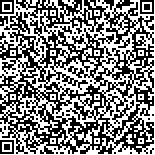| 引用本文: | 陈集辉,朱海飞,谷世超,管贻生.深度相机与惯性测量单元的相对姿态标定[J].哈尔滨工业大学学报,2018,50(11):131.DOI:10.11918/j.issn.0367-6234.201801130 |
| CHEN Jihui,ZHU Haifei,GU Shichao,GUAN Yisheng.Relative orientation calibration of a depth camera and an inertial measurement unit[J].Journal of Harbin Institute of Technology,2018,50(11):131.DOI:10.11918/j.issn.0367-6234.201801130 |
|
| 摘要: |
| 为解决深度相机和惯性测量单元之间相对姿态难以直接测量的问题,提出一种通过捕捉同一手部运动来构造位移向量继而利用最小二乘法求取两传感器相对姿态的非接触式标定方法.首先描述和分析一类相对位姿时变的深度相机和惯性测量单元的相对姿态标定问题,然后使用深度相机与惯性测量单元同时捕获手部向空间任意方向摆动的运动信息,构造相应的位移向量,进而基于刚体旋转不变性原理建立求解模型,最后使用最小二乘法求取最佳相对姿态,即标定结果.为验证标定方法的准确性和有效性,一方面组织标定解算结果和白噪声仿真数据比对从而得出偏差估计的实验,结果表明标定后相对姿态偏差少于±4°;另一方面使用深度相机和惯性测量单元组成的传感系统对人手臂运动进行捕捉实验,结果表明标定后测得数据方可正确反映人手臂参数.本文所提出的标定方法原理简单、操作方便、无需接触测量或其它辅助标定设备,适用于机器人远程操纵和体感游戏设备等场景相应传感器标定中.
|
| 关键词: 相对姿态标定 最小二乘法 深度相机 惯性测量单元 多传感融合 |
| DOI:10.11918/j.issn.0367-6234.201801130 |
| 分类号:TP242.6 |
| 文献标识码:A |
| 基金项目:国家自然科学基金青年基金项目(51605096); 北京智能机器人与系统高精尖创新中心开放基金项目(2016IRS16) |
|
| Relative orientation calibration of a depth camera and an inertial measurement unit |
|
CHEN Jihui,ZHU Haifei,GU Shichao,GUAN Yisheng
|
|
(School of Electromechanical Engineering, Guangdong University of Technology, Guangzhou 510006, China)
|
| Abstract: |
| In order to solve the problem that the relative orientation between depth camera and inertial measurement unit is difficult to measure directly, a non-contact calibration method based on the construction of displacement vectors by sensing the same hand motion is proposed to compute the relative orientation. Firstly, the relative orientation calibration problem of a depth camera and an inertial measurement unit with time-varying pose relationship is described and analyzed. Then the depth camera and the inertial measurement unit are used to simultaneously capture the movement of a hand swinging in arbitrary direction in the space, to construct displacement vectors. Finally, leveraging these displacement vectors, a model is built up based on the rotation invariance principle of a rigid body, and then solved with the least square method to obtain the calibration result. To verify the accuracy and effectiveness of the proposed method, in the one hand, a comparison between the measured data and the white noise simulation data is conducted. The simulation result shows that the relative orientation deviation after calibration is less than ±4°. On the other hand, an experiment to capture the human arm motion with a depth camera and an inertial measurement unit is also conducted. The experimental result shows that parameters of the human arm could be only correctly reflected after calibration. The calibration method presented in this paper is simple in principle, easy to operate, and without requirement of contact measurement or other auxiliary equipment, which is applicable to sensor calibration in scenarios such as robot remote control and motion sensing games.
|
| Key words: relative orientation calibration least square method depth camera inertial measurement unit multi-sensor fusion |







